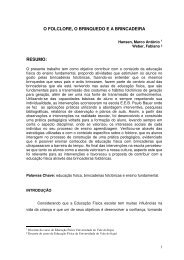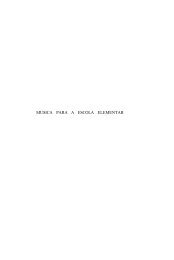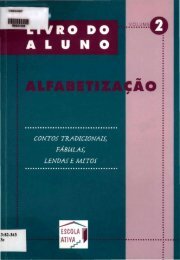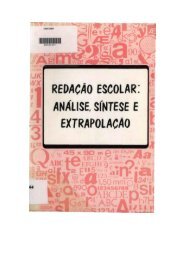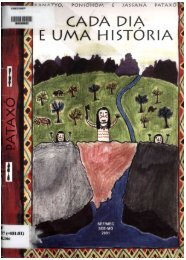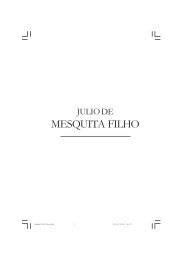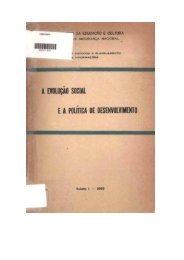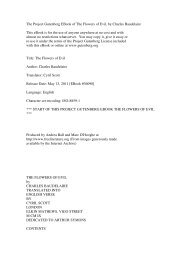A History of English Literature
A History of English Literature
A History of English Literature
You also want an ePaper? Increase the reach of your titles
YUMPU automatically turns print PDFs into web optimized ePapers that Google loves.
as: subjects and moods; general quality and its contrast with that <strong>of</strong> later<br />
lyric poetry; emotion, fancy, and imagination; imagery; melody and rhythm;<br />
contrasts among the poems; the sonnets. Do not merely make general<br />
statements, but give definite references and quotations. For the second day<br />
make special study <strong>of</strong> such particularly 'conceited' poems as the following<br />
and try to explain the conceits in detail and to form some opinion <strong>of</strong> their<br />
poetic quality: Lyly's 'Apelles' Song'; Southwell's 'Burning Babe';<br />
Ralegh's 'His Pilgrimage'; and two or three <strong>of</strong> Donne's.<br />
13. THE EARLIER ELIZABETHAN DRAMA, with study <strong>of</strong> Marlowe's Tamburlaine,<br />
Part I. Two days. Above, Chapter VI, through page 129. Historically,<br />
Tamerlane was a Mongol (Scythian) leader who in the fourteenth century<br />
overran most <strong>of</strong> Western Asia and part <strong>of</strong> Eastern Europe in much the way<br />
indicated in the play, which is based on sixteenth century Latin lives <strong>of</strong><br />
him. Of course the love element is not historical but added by Marlowe.<br />
Written discussions should begin with a very brief outline <strong>of</strong> the story<br />
(perhaps half a page). Other matters to consider: 1. Is there an abstract<br />
dramatic theme? 2. Can regular dramatic structure be traced, with a clear<br />
central climax? 3. Variety <strong>of</strong> scenes? 4. Qualities <strong>of</strong> style, e. g.,<br />
relative prominence <strong>of</strong> bombast, proper dramatic eloquence, and sheer<br />
poetry. 5. Qualities, merits, and faults <strong>of</strong> the blank verse, in detail.<br />
E.g.: How largely are the lines end-stopped (with a break in the sense at<br />
the end <strong>of</strong> each line, generally indicated by a mark <strong>of</strong> punctuation), how<br />
largely run-on (without such pause)? Is the rhythm pleasing, varied, or<br />
monotonous? 6. Characterization and motivation.<br />
14. THE ELIZABETHAN STAGE; SHAKSPERE; AND 'RICHARD II' AS A REPRESENTATIVE<br />
CHRONICLE-HISTORY PLAY. Three days. Above, pages 129-140. The historical<br />
facts on which Richard II is based may be found in any short <strong>English</strong><br />
history, years 1382-1399, though it must be remembered that Shakspere knew<br />
them only in the 'Chronicle' <strong>of</strong> Holinshed. In brief outline they are as<br />
follows: King Richard and Bolingbroke (pronounced by the Elizabethans<br />
_Bullenbroke_) are cousins, grandsons <strong>of</strong> Edward III. Richard was a<br />
mere child when he came to the throne and after a while five lords, among<br />
whom were his uncle, the Duke <strong>of</strong> Gloucester (also called in the play<br />
Woodstock), and Bolingbroke, took control <strong>of</strong> the government. Later, Richard<br />
succeeded in recovering it and' imprisoned Gloucester at Calais in the<br />
keeping <strong>of</strong> Mowbray. There Gloucester was murdered, probably by Richard's<br />
orders. According to Holinshed, whom Shakspere follows, Bolingbroke accuses<br />
Mowbray <strong>of</strong> the murder. (This is historically wrong; Bolingbroke's charge<br />
was another, trumped up, one; but that does not concern us.) Bolingbroke's<br />
purpose is to fix the crime on Mowbray and then prove that Mowbray acted at<br />
Richard's orders.<br />
The story <strong>of</strong> the play is somewhat similar to that <strong>of</strong> Marlowe's 'Edward II,'<br />
from which Shakspere doubtless took his suggestion. Main matters to<br />
consider throughout are: The characters, especially Richard and<br />
Bolingbroke; the reasons for their actions; do they change or develop? How<br />
far are the style and spirit like Marlowe; how far is there improvement? Is<br />
the verse more poetic or rhetorical? In what sorts <strong>of</strong> passages or what<br />
parts <strong>of</strong> scenes is rime chiefly used? Just what is the value <strong>of</strong> each scene<br />
in furthering the action, or for the other artistic purposes <strong>of</strong> the play?<br />
As you read, note any difficulties, and bring them up in the class.<br />
_For the second day,_ read through Act III. Act I: Why did Richard at<br />
first try to prevent the combat, then yield, and at the last moment forbid<br />
it? Are these changes significant, or important in results? (The 'long<br />
flourish' at I, iii, 122, is a bit <strong>of</strong> stage symbolism, representing an<br />
interval <strong>of</strong> two hours in which Richard deliberated with his council.)





